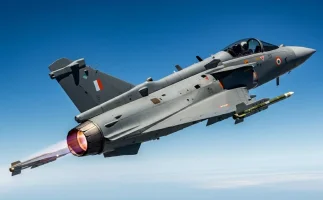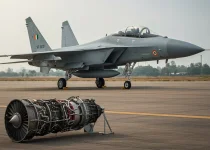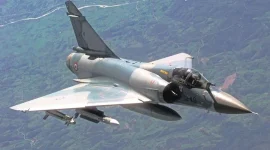- Views: 3K
- Replies: 20

Former Indian Air Force (IAF) pilots are expressing admiration for the manufacturing quality and production scale of China's J-20 stealth fighter, urging India to learn from its neighbor's success in indigenous defence production.
While acknowledging India's progress in indigenous defence development, experts are urging the nation to learn from China's long-term commitment and strategic investments in its aerospace sector.
Retired IAF pilot Sameer Joshi, who flew Mirage-2000s, recently praised the "top-grade manufacturing" of the J-20, highlighting its impressive appearance and build quality. This sentiment has been echoed by other IAF veterans and defence analysts, who have been observing China's advancements in indigenous defence production, particularly in the aerospace domain.
"The build quality of the J-20 exhibited at recent airshows demonstrates top-notch manufacturing, and now at scale," a former IAF official remarked. This achievement, experts say, is a result of decades of focused efforts by China to develop advanced aircraft systems domestically, a strategy that is now yielding results as the country seeks to narrow the gap with Western aerospace standards.
Initially met with skepticism, the J-20, a fifth-generation stealth fighter developed by Chengdu Aerospace Corporation, has steadily gained recognition for its capabilities. Developments such as the indigenous WS-10C engines and advanced stealth features, once considered areas of weakness, now demonstrate China's growing technological prowess.
Former IAF pilots attribute the J-20's success to China's unwavering commitment to self-reliance. Despite early challenges with substandard equipment, China's defence industry has benefited from sustained investment and continuous improvement over the past two decades. This progress, according to Joshi and other experts, reflects a clear vision and dedication by Chinese leadership to prioritize local defence capabilities.
India, too, has embarked on the path of indigenous defence production, with ambitious projects like the Light Combat Aircraft (LCA) Tejas, the Advanced Medium Combat Aircraft (AMCA), and various initiatives under the "Make in India" program. However, experts point to challenges such as funding constraints, limited private sector participation, and delays in scaling up production.
While India's commitment to indigenization is undeniable, the observations from former IAF officials underscore the need for consistent investment, institutional patience, and unwavering support for domestic innovation. China's success with the J-20 serves as a potent example of the benefits of maintaining a long-term focus on defence manufacturing, even when initial outcomes may not match the quality of foreign counterparts.
The J-20's manufacturing quality and production scale provide a valuable case study for India's own aspirations in defence self-reliance. While India has made significant strides with the Tejas, Akash missile system, and other indigenous programs, the J-20's journey emphasizes the importance of perseverance and a long-term commitment to overcoming initial setbacks in establishing a robust and globally competitive defence industry.




